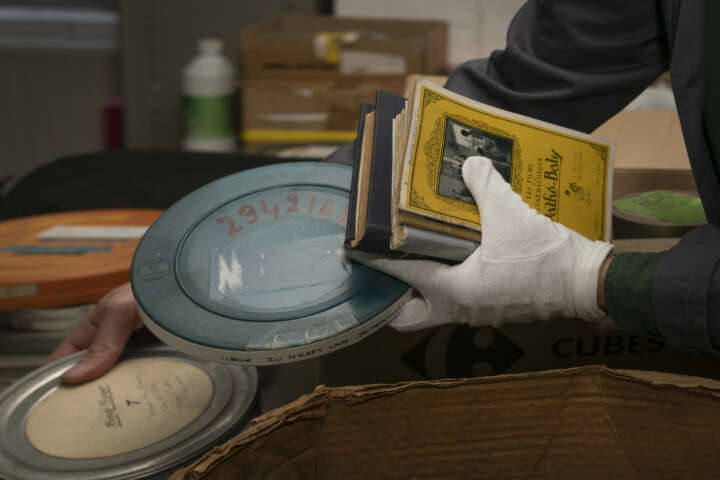History of Film in 9 objects at CINEMATEK
In addition to the film and film related collections, CINEMATEK also has a collection of important pre-cinema objects and cinematographic objects, such as magic lanterns and cameras. A part of this collection is shown in the Wunderkammer.
11th Century
1. Camera obscura
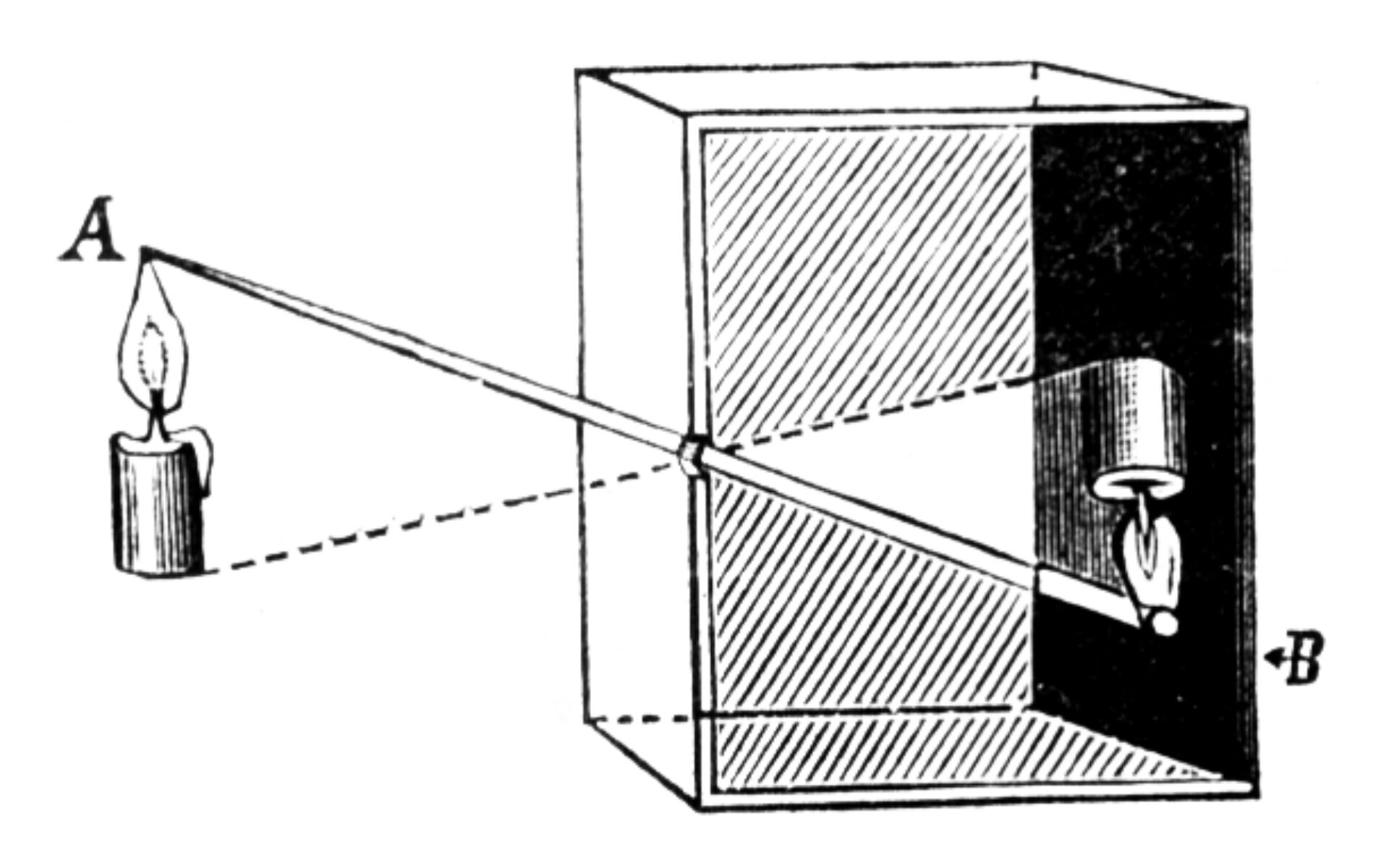
With a camera obscura you can catch images from outside in a black box. Through one small opening in the box, the light enters on the opposite wall. Light always travels in a straight line, so the light rays cross in the small hole and the image is reversed on the wall. Light always travels in a straight line, so the light rays cross each other in the hole and the image is reversed on the wall. The principle is first mentioned in the 11th century and has been studied by several scientists in the following centuries. The camera obscura later becomes the main component of the still or film camera. A lens is placed in the opening and a photosensitive layer placed on the opposite wall.
1629 - 1695
2. The Magic Lantern
and the magic lantern slides
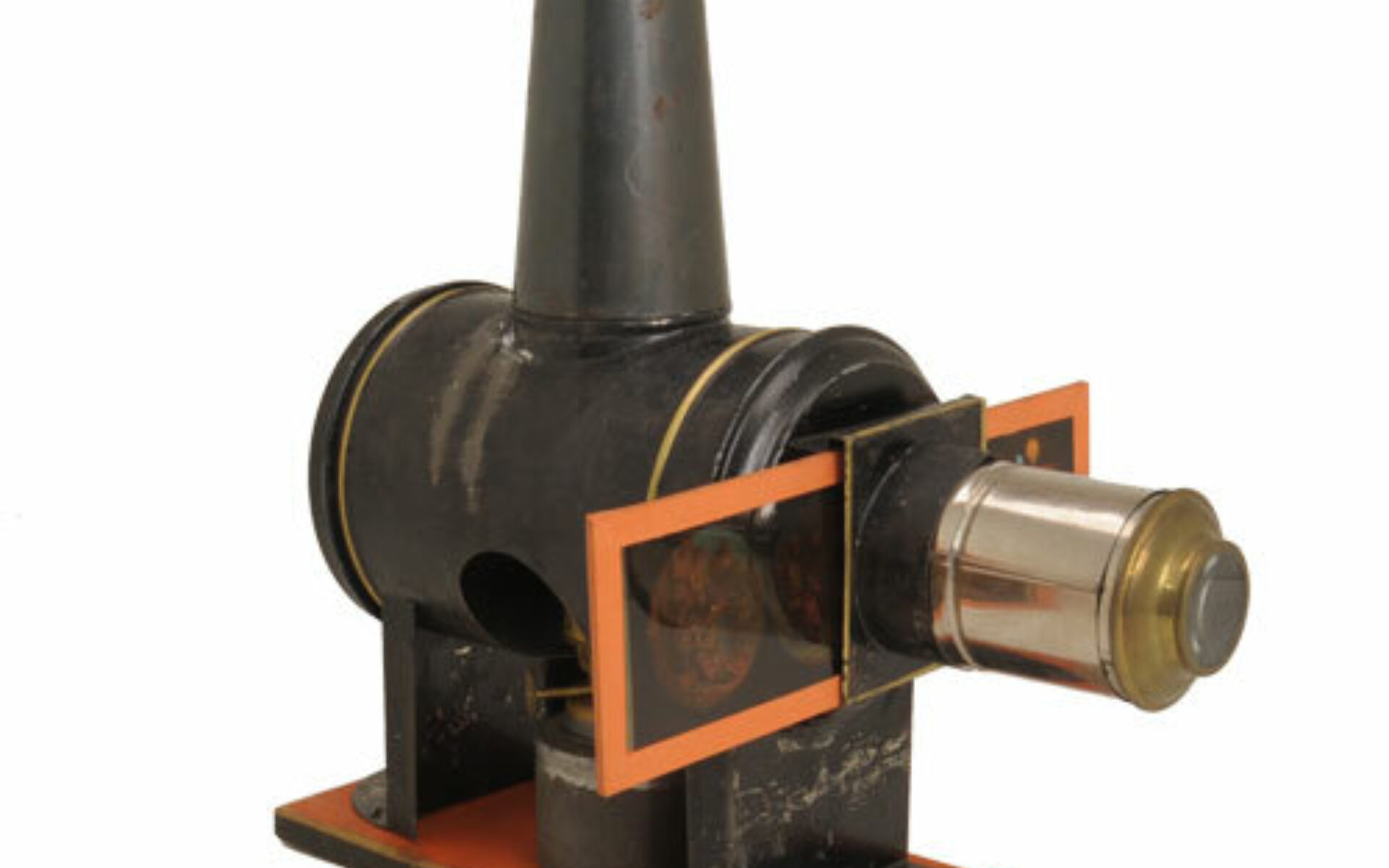
The magic lantern is an inverted camera obscura for projecting an image painted on glass onto a screen and is thus the first still image projector. The magic lantern was in use from the 18th century but became very popular in the 19th century. With the invention of photography, photographic slides were projected. A large part of the magic lanterns from our collection are displayed in the Wunderkammer. On the other hand, only a fraction of the images is shown. There are about 1200 magic lantern slides in the collection. This is very diverse ranging from toy lantern slides to professional slides used by lanternists.
(dating: 17th century, first description by Christian Huygens)
1825
3. The thaumatrope

This optical toy is a cardboard disc with on both sides a drawing that complement each other like the bird and the cage. When the disc is rotated quickly by means of the the strings on the ends then merge the two images into one image and the bird is in the cage. It shows very simplistically the after-effects of a visual observation, a scientific finding.
All thaumatropes from the collection can be seen in the Wunderkammer.
1832
4. The Phenakistiscope

In 1832, Joseph Plateau found the solution to reconstitute a movement that had been previously dissected. He drew 16 drawings on the edge of a round disc, each representing a phase of a movement, eg a dancer doing a pirouette. Slots were made between the drawings. The other side of the disc was black. Plateau turned the disc with the drawings facing a mirror. In this way he always saw a drawing through the groove, then black and then the next drawing. Due to the rapid succession of those different images with black (= shutter) in between, one gets a composition of previously dissected movement and that through the after-effects of a visual perception. The shutter is later crucial in the decomposition (camera) and composition (projector) of the movement.
In the Wunderkammer you will find some discs from our collection as well as a large model of the fenakistiscope.
1877
5. The Praxinoscope
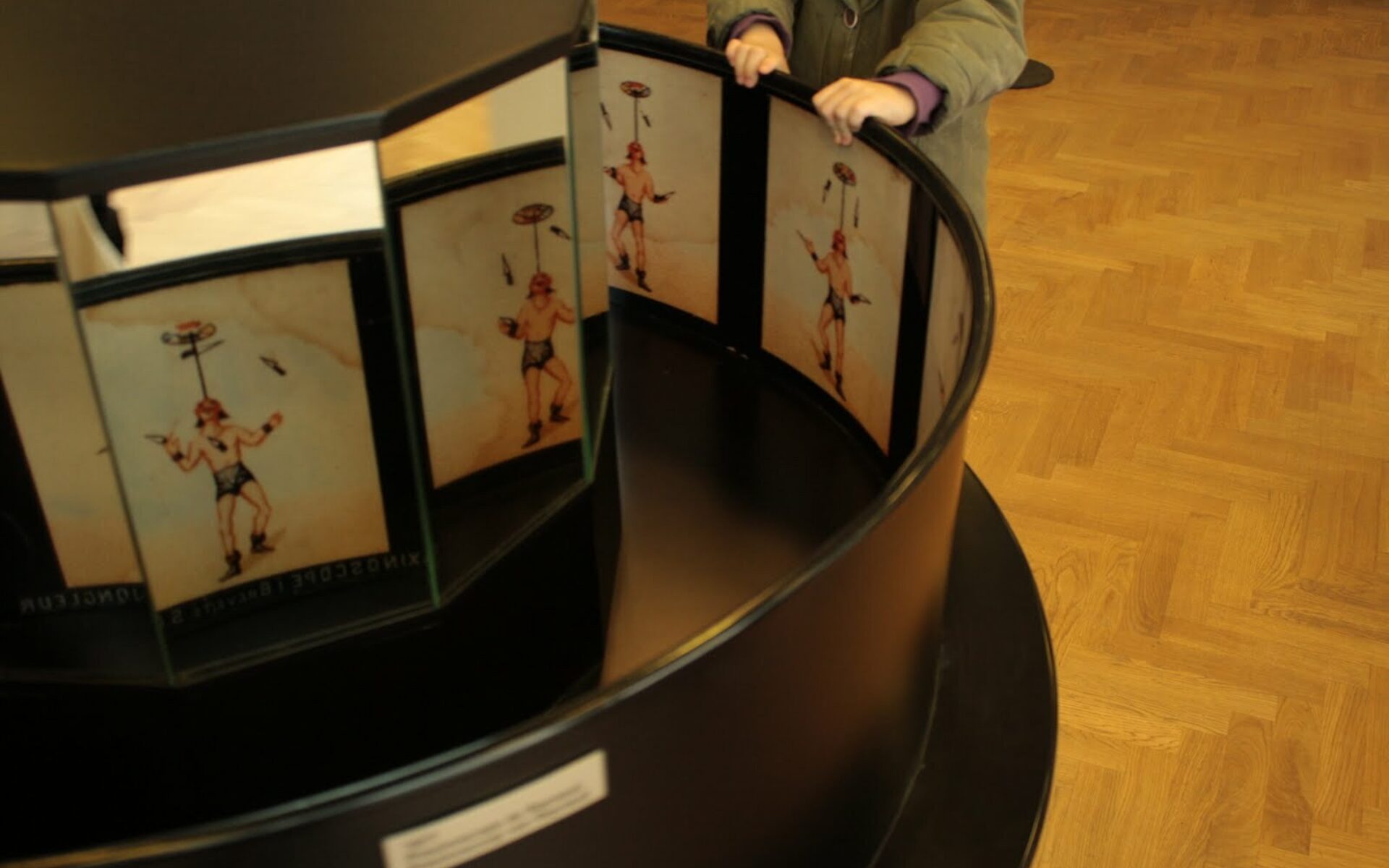
In 1877 Emile Reynaud found another way with his praxinoscope to make a composition of a movement in which the image definition was better. The praxinoscope is a cylinder with a prism of mirrors in the middle, as many mirrors as there are drawings on the strip on the inside of the cylinder. When, when the cylinder is rotated, one mirror replaces another with the drawings reflected in it, one gets the composition of the movement. The common rib provides a break in the perception, a closure through optical compensation.
Optical compensation is still used in vision tables, with which films in the depot are verified before showing in our halls.
The large praxinoscope with the knife thrower is on display in the museum.
1893
6. Edison's Kinetoscope
and the 35mm film

Edison devised a transparent film with a sensitive layer for use in his kinetograph and in his kinetoscope. After many tests, it comes to a 35mm format with 4 perforations per image height on the sides. These are crucial for regular locomotion. The 35mm format was used almost unchanged until the switch to digital techniques. Edison's kinetoscope (1893) is a device in which a short film was in a continuous loop and could be viewed by 1 person through the viewing opening. It's not a projection. Halls with rows of kinetoscopes were opened in America and later in Europe.
In the museum a working Edison kinetoscope is on display.
1895
7. The Cinematograph by Lumière

The cinematographer was the perfect invention; the device is hardly bigger than a camera and could record as well as project. The Lumière brothers have found a perfect solution for the even propulsion of the pellicule, namely a rounded triangle that serves a central axis on which the grippers are located, which each time pull the pellicule an image height. On that central axis is also the shutter disk that shields the recording window while the pellicule is moving. The Lumières recorded at a rate of 16 frames per second. As one progresses in time, one will record faster from 18 frames to 24 frames per second. With the analog sound film, the speed is fixed at 24 frames per second. With digital film, the recording speed is no longer fixed.
The Wunderkammer contains an exact replica with a mechanism that shows the operation in detail.
The 1950's
8. Bauer 35 mm Projector

The Bauer B11 dates from the 1950s and is the Rolls Royce of projectors. It is the oldest projector in operation at CINEMATEK. It is still used to show films in the Plateau room. Some adjustments were made for the sound.
20e eeuw
9. Cameflex 35 mm

With this Cameflex, Freddy Rents filmed the film "Déjà s'envole la fleur maigre" by Paul Meyer. The film was restored by CINEMATEK and released on DVD. The camera was donated to CINEMATEK by Marc Rents. The circle is complete.
CINEMATEK accepts donations of projectors and cameras for its collection.
Want to discover more film history?
Then definitely book a guided tour in our Wunderkammer for your family, your group of friends or your school.
Access to our OBJECT Collections
Start your Reserach into our object collection here
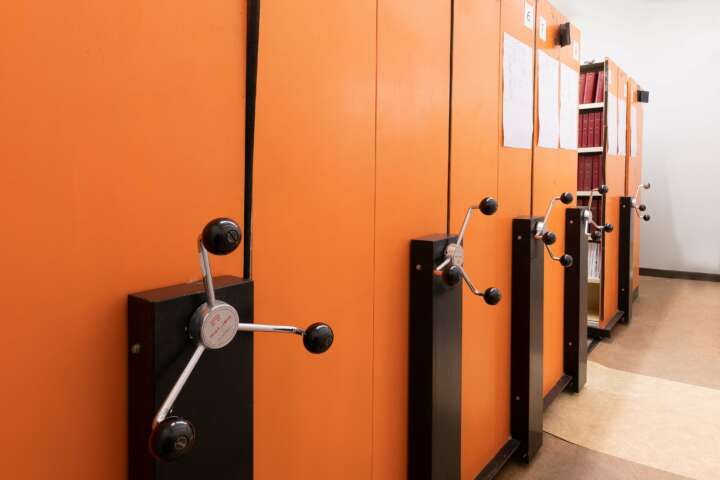
Access to our OBJECT Collections
Do you need to loan one of our objects for your museum or exhibition, please start here.
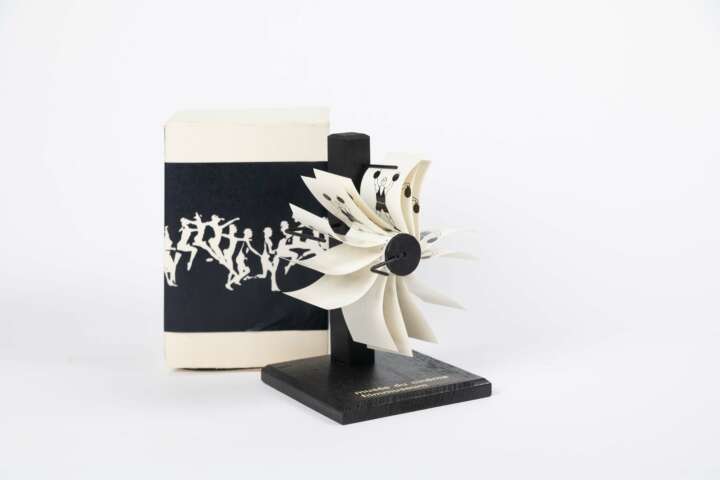
Access to our OBJECT Collections
Do you have a film object or camera that you would like to donate to our collections, please start here.
